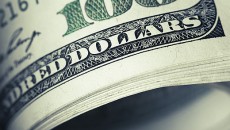PepsiCo’s New Acquisition
 PepsiCo Inc CEO Indra Nooyi has retaken the lead in the juice and dairy industry in Russia from Coca-Cola by acquiring controlling stake in Wimm-Bill-Dann Dairy & Juice Co. for $3.8 billion. Sixty Six percent of Wimm-Bill-Dann will be bought by PepsiCo with plans to make an offer for the remaining amount that is subject to government approval. Also, the price has increased to $33 per share which is 32 percent more than the simple moving average of the past 30 days.
PepsiCo Inc CEO Indra Nooyi has retaken the lead in the juice and dairy industry in Russia from Coca-Cola by acquiring controlling stake in Wimm-Bill-Dann Dairy & Juice Co. for $3.8 billion. Sixty Six percent of Wimm-Bill-Dann will be bought by PepsiCo with plans to make an offer for the remaining amount that is subject to government approval. Also, the price has increased to $33 per share which is 32 percent more than the simple moving average of the past 30 days.
PepsiCo is paying 19.8x EBITDA multiple for this transaction including the assumed debt according to data compiled by Bloomberg with a median multiple for similar deals since 2001 being 9.66x EBITDA.
In the Russian beverage business, this deal is PepsiCo’s largest yet following the 2008 purchase of a majority stake in OAO Lebedyansky, the country’s biggest juice maker. Wimm-Bill-Dann, whose brands include Chudo dairy products and Agusha baby food has almost doubled its sales since 2005.With this move Russia has become PepsiCo’s biggest international market giving PepsiCo an edge over Coca-Cola, which also has sought acquisitions in the country to profit from its growing middle class.
PepsiCo’s strategy includes making commodity items like milk more attractive to higher-income consumers through packaging, safety and product innovation, Mehmood Khan, PepsiCo’s chief research and development officer, said in a conference call. In emerging markets, that might include offering standard milk in enclosed, bacteria-free packages to customers accustomed to unsanitary open containers. According to Khan, PepsiCo’s strategy will be to create dairy-based drinks with more convenient packaging and added nutrients.
– Rowena Zacharia
Fed’s Financial Crisis Emergency Report
In a report published this past Wednesday, December 1st, the Federal Reserve (Fed) announced that from December 2007 to last July it had incurred in 21,000 transactions to support the shaking economy that nearly collapsed in 2008. The report was requested by the Congress to assess the measures taken by the Fed. The report showed that the Fed had not only injected cash into banks, brokers and insurance companies, but also to foreign central banks, businesses and investors to try to keep the economy afloat.
According to the New York Times, the report presented that from December 2007 to October 2008, the Fed allowed swap lines with foreign central banks. The main benefactors were the European Central Bank and countries like Japan, England, Switzerland and South Korea. Besides the known banks that had taken Fed funds (Citi, Merrill Lynch and Morgan Stanley), it was also stated that foreign banks like UBS, Mizuho Securities and BNP Paribas had also participated in the Feds relief plan.
Blue chips also benefited from the Fed’s money. They did so by selling more than $225 billion in commercial paper to the Fed, action taken in order to cover for short term operating expenses such as payroll or inventories. Some of the companies that took this course of action were Caterpillar, McDonald’s, Verizon, General Electric, Toyota, among others.
Some institutional investors also benefited during this time period under another Fed program, the Term Asset-Backed Securities Loan Facility. Big institutional investors such as Pimco, T. Rowe Price and BlackRock were able to increase borrowing at historical low interest rates.
It seems as if during this time period everyone, in one way or another has access to the Federal Reserve discount window. The Fed has repeated in different occasions that without its intervention financial markets would have collapsed, unemployment would be higher and investors’ confidence would have suffered to a greater degree.
– Wellington Rodriguez
Article submitted by: Wellington Rodriguez and Rowena Zacharia of the Capital Markets Lab (CML). To learn more about the Capital Markets Lab please visit https://business.fiu.edu/capital-markets-lab/.




